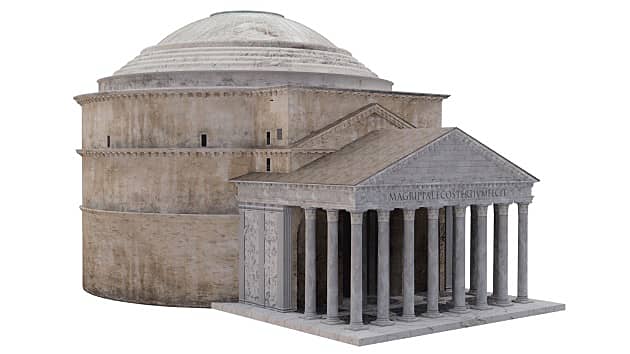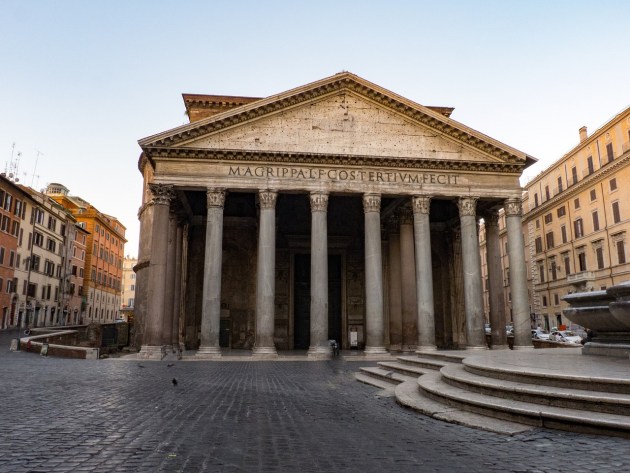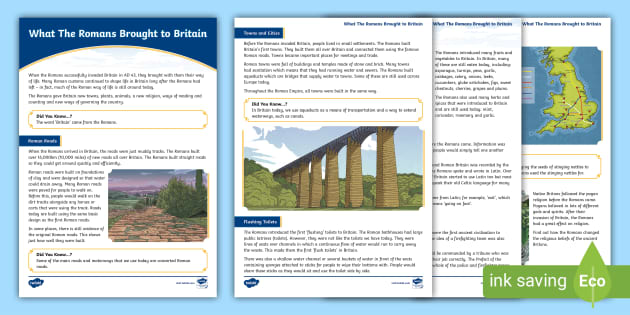

The Pantheon is a well-preserved ancient Roman temple located in the centre of Rome. It’s located on the site of the original Pantheon, which is believed to have been built between 27 BC and 25 BC and was commissioned by Marcus Vipsanius Agrippa, a prominent Roman statesman and close friend of Emperor Augustus. After being destroyed by fire twice, the Pantheon as we know it today was rebuilt under Emperor Hadrian.
The name Pantheon combines the word ‘pan’, meaning or referring to ‘all’, and the word ‘theion’, which related to the gods. Taken together, Pantheon means ‘all of the gods’. However, it’s unclear if the Pantheon was a temple dedicated to all of the Roman gods. It’s possible that this might have been an informal nickname the ancient Romans gave to their temple, in reference to various statues of different gods around the temple.

The Roman Pantheon has an impressive portico with 16 massive granite columns. Above the entrance to the temple, there’s an engraving which reads ‘M.AGRIPPA.L.F.COS.TERTIUM.FECIT’. This is a reference to Marcus Agrippa, who you’ll remember as the man who commissioned the original temple, and it says that he built it during his third term as consul.
While it might look small from the outside, visitors feel a sense of awe once they step into the Pantheon. This effect is all thanks to the Pantheon’s massive 43-metre high concrete dome, which is still the biggest of its kind in the world. At the very top of the dome is an oculus, a circular hole which lets in sunlight.

The inside of the temple features a patterned marble floor and many lavish decorations.
The Roman Pantheon was rebuilt for the final time between AD 118 and AD 125, which means the Pantheon as we know it today is around 1,900 years old. This makes it slightly younger than another famous Roman landmark, the Colosseum, which was built between AD 72 and AD 80.

Let's delve a little deeper into the history of the Pantheon and how it's survived into the modern day after so many years have passed.
The Pantheon that we can see today was built on the site of the original Pantheon, which was commissioned and built some time around 25 BC. However, misfortune befell the original temple when it was destroyed by a fire around AD 80. To make matters worse, it burned down again after being rebuilt under the Emperor Domitian.
In AD 117, Hadrian became the Emperor of Rome. Hadrian undertook many large-scale building projects during his reign, and he oversaw the construction of the new Pantheon. No one quite knows who the architect of the new Pantheon was, but it’s likely that it was built to match Hadrian’s tastes and his interest in Greek architecture. Despite the numerous changes made over the old one, Hadrian decided to keep the engraving from the original Pantheon.
Following the fall of Rome, the Pantheon fell into neglect. This lasted until AD 609, during the time of the Byzantine Empire, when the Pantheon was converted into a Catholic Church. Lots of the relics and decorations inside the temple were changed when it became a church, but the overall look of the building did not change much. It’s thanks to its constant use as a church that the Pantheon has survived so well.
During its later history, many more changes and modifications were made to the building. In the year 1270, a bell tower was added in between the portico and the dome. This was removed by Pope Urban VIII during the 17th century, and two new bell towers were added, which would also get taken down. At one point, the bronze decorations along the ceiling were even melted down to make cannons!
That brings us to the modern day, where the Roman Pantheon remains one of the best-surviving symbols of ancient Rome. It’s still a functioning church, and visitors are able to go inside the Pantheon and look around for free.

The Pantheon really is an incredible building with a fascinating history behind it, so why not help pupils explore it with our range of incredible teaching resources?



 Home
Home  Membership
Membership  Customer Support
Customer Support  Create
Create  Blog
Blog 




















